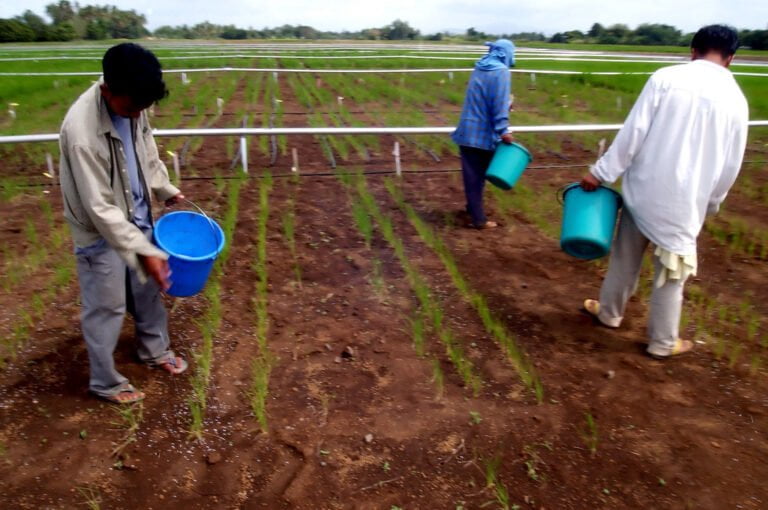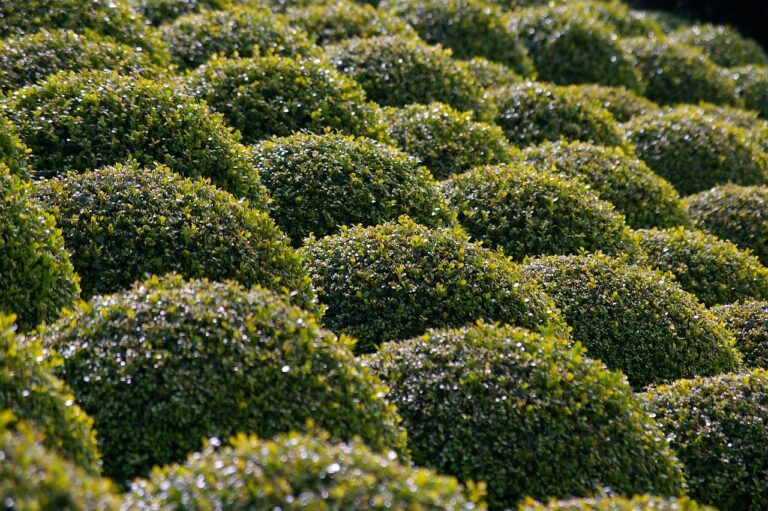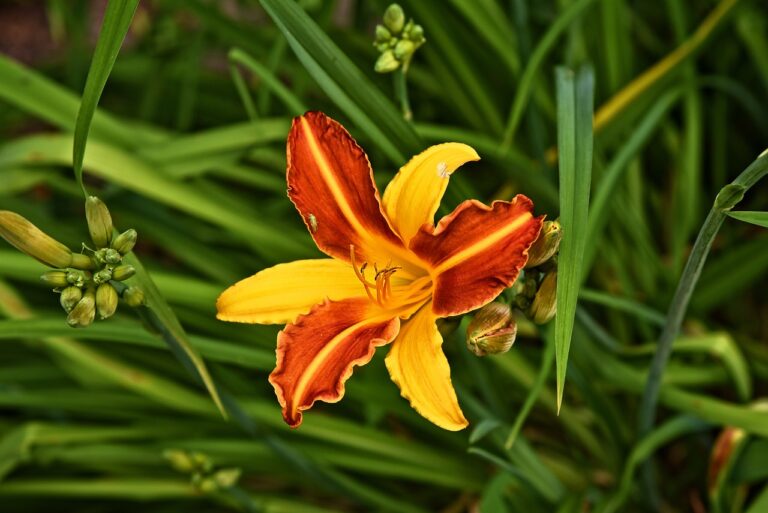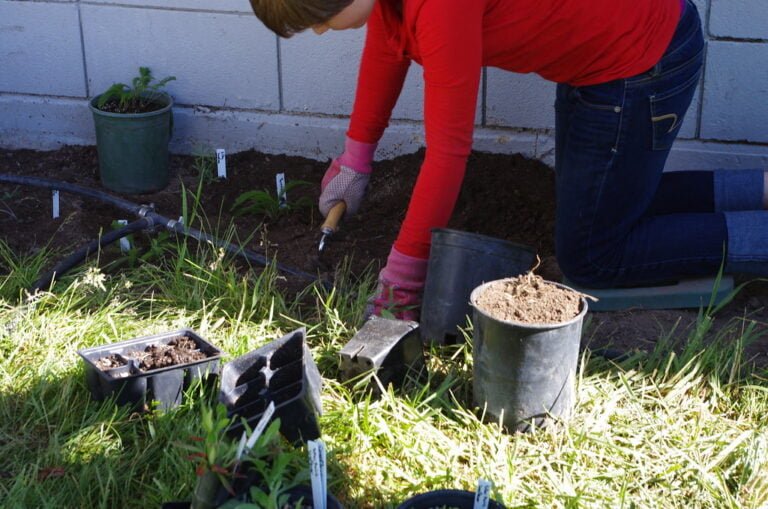Why Are Your Elephant Ear Plants Turning Yellow? Causes and Solutions
Elephant ear plants turn yellow due to overwatering, underwatering, or nutrient deficiencies like nitrogen, potassium, or magnesium. Root issues such as rot from excess water or stress from drought can cause this too. Improper light exposure may also lead to yellow leaves. To fix, guarantee proper watering, balanced nutrients, good drainage, and suitable light levels. Adjust care based on plant needs. Address yellowing leaves promptly to keep plants healthy and vibrant. Further details on preventing this issue are available below.
Common Causes of Yellowing Leaves
Yellowing leaves in elephant ear plants can be attributed to various factors, including overwatering, underwatering, nutrient deficiencies, and environmental conditions. When the leaves of an elephant ear plant start turning yellow, it is important to investigate the root causes to address the issue promptly.
One primary reason for yellowing leaves in elephant ear plants is nutrient deficiencies. These plants require specific nutrients to thrive, and a lack of essential elements like nitrogen, potassium, or magnesium can manifest as yellowing leaves. Ensuring proper fertilization and a balanced nutrient intake is critical to prevent this issue.
Another common cause of yellow leaves in elephant ear plants is root problems. Overwatering can lead to root rot, impairing the plant’s ability to absorb nutrients effectively, resulting in yellowing foliage. Conversely, underwatering can also stress the roots, leading to similar symptoms. Maintaining well-draining soil and proper watering practices is important to keep the roots healthy and the leaves vibrant.
Additionally, environmental factors such as exposure to direct sunlight or inadequate light can contribute to leaf yellowing. Elephant ear plants prefer indirect light or partial shade, and excessive sunlight can scorch the leaves, causing them to turn yellow. Ensuring the plant is placed in an environment with suitable lighting conditions can help prevent this issue.
Evaluating Watering Practices
To guarantee the best growth and health of elephant ear plants, it is crucial to carefully assess and adjust watering practices. Yellowing leaves can be indicative of both overwatering and underwatering. Employing the finger test by inserting your finger into the soil up to the first knuckle helps determine if the plant needs watering. Proper drainage is essential to prevent waterlogging, which can lead to root rot. Make sure that plant pots have drainage holes and consider using perlite or sand in the soil mix to improve drainage and aeration.
Watering frequency should be adjusted based on seasonal changes. Elephant ear plants may require more water during hot and dry periods and less during cooler months. Monitor soil moisture regularly to avoid extremes. During periods of active growth, these plants may require more frequent watering. However, in winter or dormancy, reduce watering to prevent issues related to excess moisture.
Optimizing Light Exposure
For optimal growth and health of elephant ear plants, ensuring they receive bright, indirect light is vital. Elephant ear plants, scientifically known as colocasias, flourish when provided with the right amount of light. Here are some key points to ponder when optimizing light exposure for your colocasias:
- Vital Indirect Light: Elephant ear plants require bright, indirect light to fuel their photosynthesis process effectively.
- Leaf Burn: Direct sunlight can lead to leaf burn in elephant ear plants, causing damage to the leaves.
- Insufficient Light: Lack of proper light exposure can result in yellowing leaves, indicating inadequate chlorophyll production.
- Photosynthesis and Chlorophyll Production: Adequate light is essential for photosynthesis and chlorophyll production, which are vital processes for healthy foliage.
- Adjusting Light Levels: Monitoring and adjusting light levels can help prevent leaf yellowing and promote vibrant foliage in colocasias.
Enhancing Soil Nutrients
To improve the growth and vitality of elephant ear plants, it is important to concentrate on maximizing the nutrient content of the soil they are planted in. Elephant ear plants thrive in a well-draining, nutrient-rich soil mix. It is important to make sure that the soil pH falls within the ideal range of 5.5-6.5 for these plants to absorb nutrients effectively. Incorporating organic matter such as compost into the soil can greatly enrich the nutrient profile, promoting healthier growth.
Yellowing leaves with green veins are often signs of nutrient deficiencies in elephant ear plants. To address this issue, consider adding perlite or vermiculite to the soil mix. These materials aid in improving drainage, which is crucial for preventing waterlogging and facilitating proper nutrient uptake by the plants.
Implementing Preventative Measures
Implementing preventative measures involves establishing a proactive care schedule tailored to the specific needs of elephant ear plants. To guarantee plant health and prevent yellowing leaves, the following steps should be taken:
- Use well-draining soil: Elephant ear plants prefer soil that drains effectively to prevent waterlogging, which can lead to root rot.
- Clean pots and sterile media: Utilize clean pots and sterile media to prevent the spread of diseases and pests that can affect the plant’s health.
- Inspect plants regularly: Routinely examine the plants for any signs of distress, such as yellowing leaves, and take necessary actions promptly.
- Practice safe gardening habits: Implement secure gardening practices to promote overall plant health, including proper watering, adequate sunlight, and appropriate fertilization.
- Monitor plant health: Keep a close eye on the plant’s overall health and growth, adjusting care practices as needed to prevent issues like yellowing leaves from worsening.






